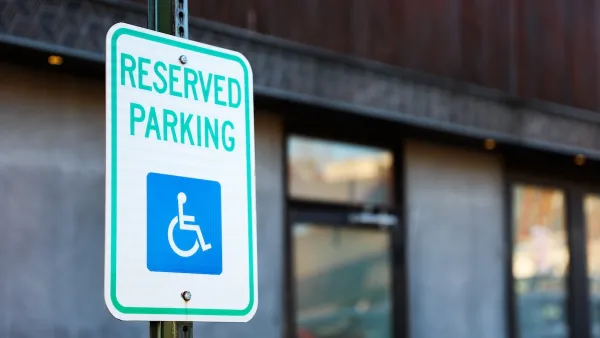In planning, a number of common principles of practice are widely accepted. However, an alternative set of guidelines can better serve as information and decision-making tools.

Joe Cortright says rules of thumb used in transportation and land use planning need to be reevaluated. "One of the problems with rules of thumb (or the more academic term, 'heuristics') is that while they may work well in many cases, they may work very poorly in others – and they may be subject to important cognitive biases that lead us to make bad decisions."
For example, the idea that levels of service and maximum vehicle throughput should guide street design has led to streets that are too wide and do not accommodate other modes as well as an inefficient hierarchy of roadways. Assumptions about parking requirements and trip generation estimates for particular land uses have also resulted in problematic outcomes, argues Cortright.
He offers a different set of heuristics: closer is better, slower is safer, and sharing is efficient. He also believes accessibility, not mobility, should be the priority. "Many transportation heuristics emphasize speed: how do we make things move faster. But what we really care about is getting to (or being at) our destinations, not rapidly traveling among them. Speed should be secondary to choice."
FULL STORY: When planning rules of thumb are “all thumbs”

Maui's Vacation Rental Debate Turns Ugly
Verbal attacks, misinformation campaigns and fistfights plague a high-stakes debate to convert thousands of vacation rentals into long-term housing.

Planetizen Federal Action Tracker
A weekly monitor of how Trump’s orders and actions are impacting planners and planning in America.

In Urban Planning, AI Prompting Could be the New Design Thinking
Creativity has long been key to great urban design. What if we see AI as our new creative partner?

How Trump's HUD Budget Proposal Would Harm Homelessness Response
Experts say the change to the HUD budget would make it more difficult to identify people who are homeless and connect them with services, and to prevent homelessness.

The Vast Potential of the Right-of-Way
One writer argues that the space between two building faces is the most important element of the built environment.

Florida Seniors Face Rising Homelessness Risk
High housing costs are pushing more seniors, many of them on a fixed income, into homelessness.
Urban Design for Planners 1: Software Tools
This six-course series explores essential urban design concepts using open source software and equips planners with the tools they need to participate fully in the urban design process.
Planning for Universal Design
Learn the tools for implementing Universal Design in planning regulations.
Gallatin County Department of Planning & Community Development
Heyer Gruel & Associates PA
JM Goldson LLC
City of Camden Redevelopment Agency
City of Astoria
Transportation Research & Education Center (TREC) at Portland State University
Jefferson Parish Government
Camden Redevelopment Agency
City of Claremont





























